
Environmental catastrophes have become the regular stuff of Hollywood blockbusters, as well as the focus of serious consideration in documentary films.
Kazuo Hara's Sennan Asbestos Disaster falls into the latter category, and although it has already received accolades on the international festival circuit - including the Best Asian Documentary Award upon its premiere at the 2017 Busan International Film Festival, and coveted Audience Awards at the Yamagata International Documentary Film Festival and Tokyo FILMeX International Film Festival - it deserves a wider audience. Everyone now knows that asbestos is toxic, that countless millions around the world have been exposed to it, and that many have died from the lung cancers, esotheliomas and respiratory ailments caused by significant exposure.
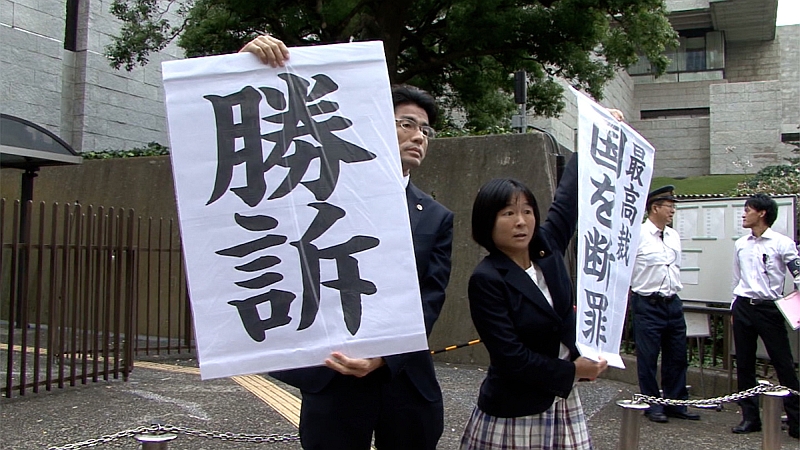
The legal team announces good news outside the Supreme Court of Japan. © Shissoh Production
But few realize that the deadly material has been banned outright in just 55 nations, not including China, Russia, India, Brazil, Canada (although a ban is expected this year) and the United States. In the US, up to 1% of a product may legally contain the harmful substance, thus continuing to endanger workers in such high-risk jobs as construction, firefighting and military service, among others.
Sennan Asbestos Disaster is one of the first films to closely chronicle the prolonged struggles of former asbestos workers and their families in Japan. Hara spent 8 years following them as they grappled with their ticking time-bomb diseases while awaiting the outcome of class-action lawsuits against the government for its culpability in their shortened lifespans.
A firebrand whose work often takes aim at the Powers That Be, Hara has been making what he calls "action documentaries" since 1972, collaborating closely with a forceful protagonist on each, and creating work that is both intensely personal and formally daring. Through these "characters with an edge," he has challenged traditional perceptions, confronted social injustices, shed light on issues too long in the dark, broken taboos and continually nudged viewers out of their comfort zones.
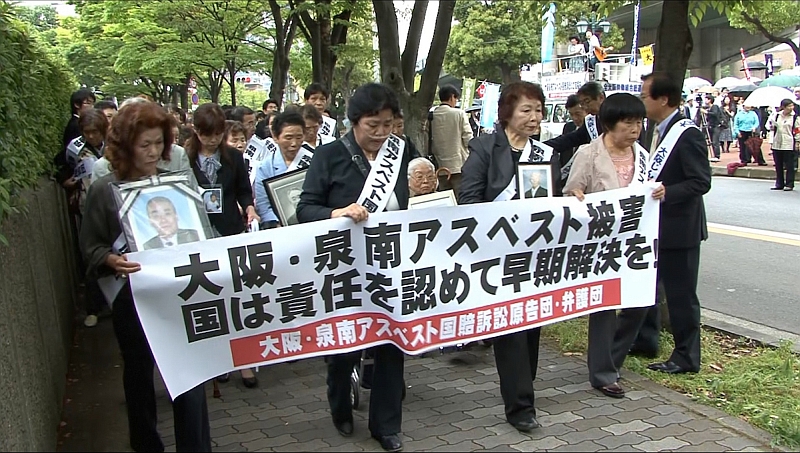
Plaintiffs demonstrate outside the Ministry of Health. © Shissoh Production
In his first film, Goodbye CP (1972), his handicapped protagonist forced us to reconsider the relationship between the able-bodied and the disabled; in Extreme Private Eros: Love Song 1974, his protagonist was Hara's ex-wife, a crusading feminist, bisexual and mother of an interracial child with an American GI; in The Emperor's Naked Army Marches On (1987), his protagonist was a former soldier who relentlessly hounded his superior officers, demanding they be held accountable for their actions in World War II; in A Dedicated Life (1994), his protagonist was the controversial novelist and communist Mitsuharu Inoue.
With Sennan Asbestos Disaster, Hara has his first-ever group protagonist: the "normal people" who lived and worked in Osaka's Sennan district. Yet despite an expansive cast of characters and a nearly 4-hour running time, he manages to portray them as fully-rounded individuals, and to infuse their tragedy with gentle humor and a winningly empathetic warmth.
As helpful graphics inform us at the beginning of the film, Sennan was an erstwhile "asbestos village" that once hosted the largest number of asbestos factories in Japan. The district flourished from the late Meiji through the Showa periods (1868-1989), boasting over 200 processing plants at its peak, and lured thousands of uneducated job-seekers from the Japanese and Korean countrysides.
Although the Japanese government was well aware of the health hazards involved for many decades, it continued to prioritize economic development above human health long after other nations had ceased manufacturing the material, and neglected to implement either health regulations or countermeasures.
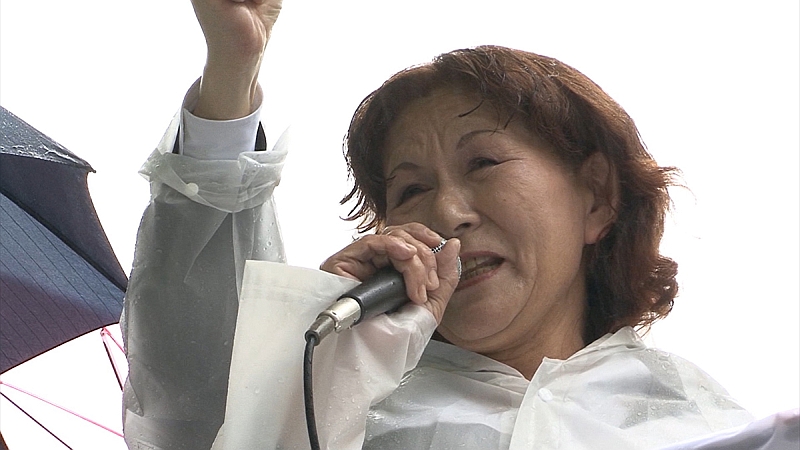
Plaintiff Miyoko Sato, whose husband, Kenichi, died from asbestos exposure. © Shissoh Production
In 2006, 31 Sennan plaintiffs filed suit against the government seeking compensation for irreversible damages to their health, and Hara began covering meetings of the Citizen's Group for Sennan Asbestos Damage, founded by Kazuyoshi Yuoka. Yuoka previously managed an asbestos factory started by his grandfather, and his own guilt motivates him to occasional extremes during the course of the trials.
One watches Sennan Asbestos Factory on the edge of the seat, with a mounting sense of despair as the government wages a war of attrition against the ailing plaintiffs. As the years stretch on — punctuated by minor victories in court, but no admission of responsibility nor compensation — many of the plaintiffs will gradually succumb, not surviving to see their own suits through.
Eventually, the Supreme Court rules that the government must compensate the victims, but caps the liability period at 1971, although asbestos was used in Japan from 1900 - 2006 and the first dangers were recognized in 1957.
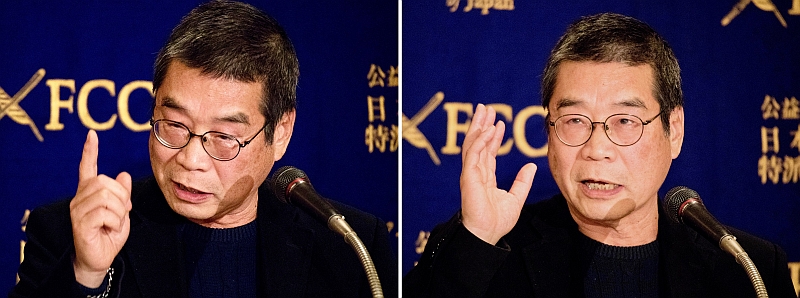
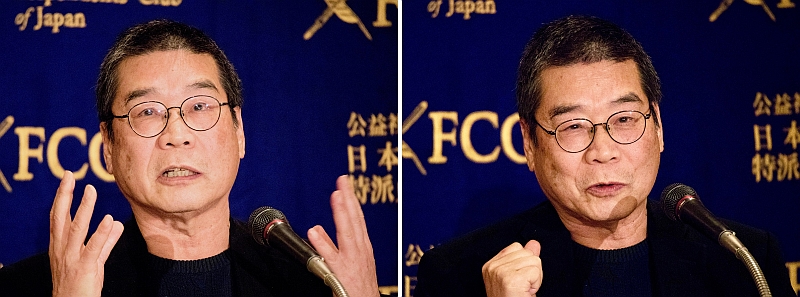
Hara makes points from the dais. © Koichi Mori
During the Q&A session following the screening, an FCCJ member asked how they arrived at the year 1971 - was it because the workers themselves were expected to have known by then?
Responded Hara, "In this case, and many others, the court has tried to limit who will be compensated, and who not. I think this is an instance of pandering to authority, and trying to maintain the face of the government. At least that's my guess."
Another audience member followed up, saying that he appreciated the film's emotional journey, but that he wondered whether the director felt that judicial decisions and the power of the court should not be subjected to scrutiny by documentarians. Hara sought to disavow him of the notion, explaining, "In Japan, video cameras are not allowed inside the courtroom. It's very difficult to question the fundamental nature of the court [proceedings]. Now that I've finished the film, I realize that intentionally but subconsciously, I probably wanted to depict the Japanese people, the 'commoners,' their pride and their prejudices, and their achievements."
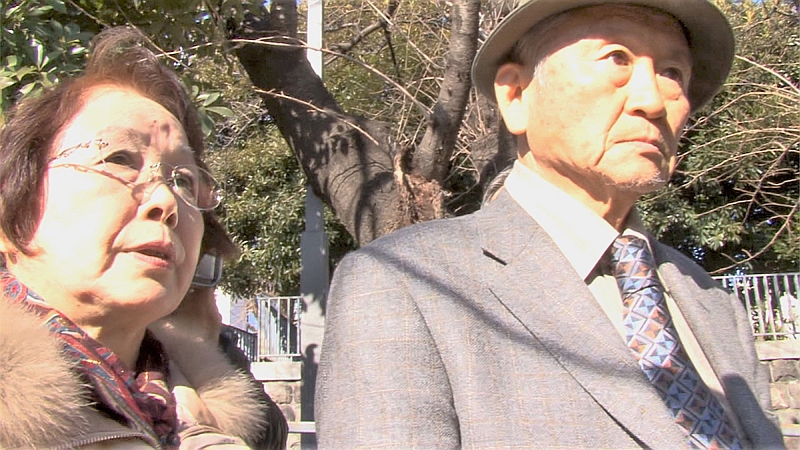
Citizen's Group founder and activist Kazuyoshi Yuoka with plaintiff Kazuko Minami. © Shissoh Production
Noting that the film's subjects had already watched the film "3 or 4 times" during a pre-release run in a theater in Sennan, he continued, "As you mentioned, I did put a lot of emotional weight on these commoners, and whether I could show their emotions interestingly, cinematically, was a bit of [a challenge] for me. You may have seen my film The Emperor's Naked Army Marches On, in which I depicted a man who attacked the emperor alone, a very strong-willed character. You could say that he's as far removed from the common people as you can get. That kind of strong character with an ego is 180 degrees opposite to the protagonists of this new film. I focused on creating an entertaining documentary despite their being so ordinary."
(Hara later added that Kenzo Okuzaki, the government combatant in The Emperor's Naked Army — like the other subjects of his previous documentaries - became famous because of his films. "Until his death," he said, "he was adamantly demanding that I make a sequel.")
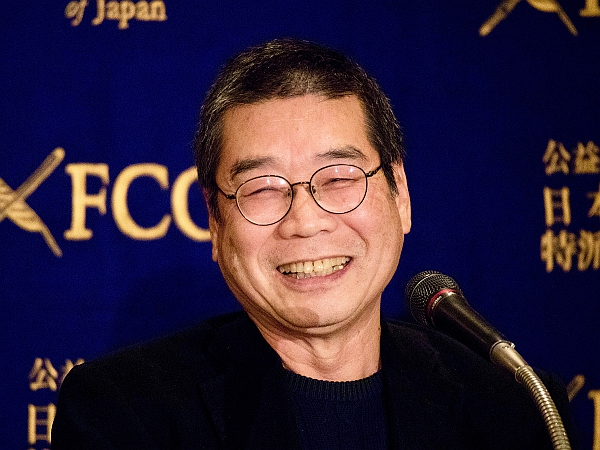
©Koichi Mori
Hara was asked about the stylistic differences between the two parts of the film, and if they were a result of the progress of the struggle or otherwise. "I've heard from viewers that the two halves give very different impressions," responded the director, "and they've suggested that I provoked things to happen in the second half. It's true that in my previous films, I have actively provoked my subjects. But not this time. This film is edited chronologically [and] because of the course of events, a certain energy arose that came to a head in the latter half of the struggle."
He pauses for effect. "It was as if the sky fell for me. I couldn't believe my ears. I was really angry to hear that. I'm very fond of these common people, but it's something they should never have said. I despise the very goodness of their nature." Another pause. "That is the message of the film."
And he means it, but has put it better previously. On the Japan premiere of Sennan Asbestos Disaster at the 2017 Yamagata International Documentary Film Festival, Hara declared, "With this work, what I wanted to say most was, 'People of Japan, faced with these authorities who do whatever they please, are you just going to sit back and accept it?'"
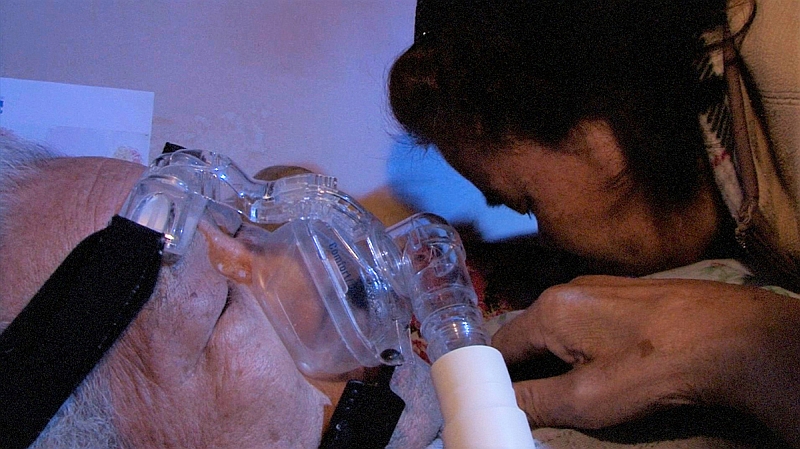
© Shissoh Production
One imagines that the message may be the same for his next film, about the Minamata mercury poisoning tragedy. "I've been documenting Minamata for the past 12 years," he told the audience, "and it's such a huge problem, it's been difficult for me to focus on one theme. But I'm determined to finish the film, one way or another, by the end of 2018."
To the applause that erupted, he immediately said, "Please don't clap, [it increases the pressure on me]. In the asbestos trials, Mr. Yuoka had very different opinions from the legal counsel on many occasions, but they managed to work together to the very end. When you go to Minamata, however, you see that the people who voice different opinions from the main group are being sidelined and bad-mouthed. There's a hatred in the air. Trying to make a film in that kind of atmosphere, I can only feel this negative energy. So even though you applaud me, and I know I must finish this film one way or another, I'm not feeling very optimistic."
Hara's latest masterwork is a harrowing exploration into the inhumanity of capitalism, colonialism and the state. There is no reason to worry that his next will not measure up.
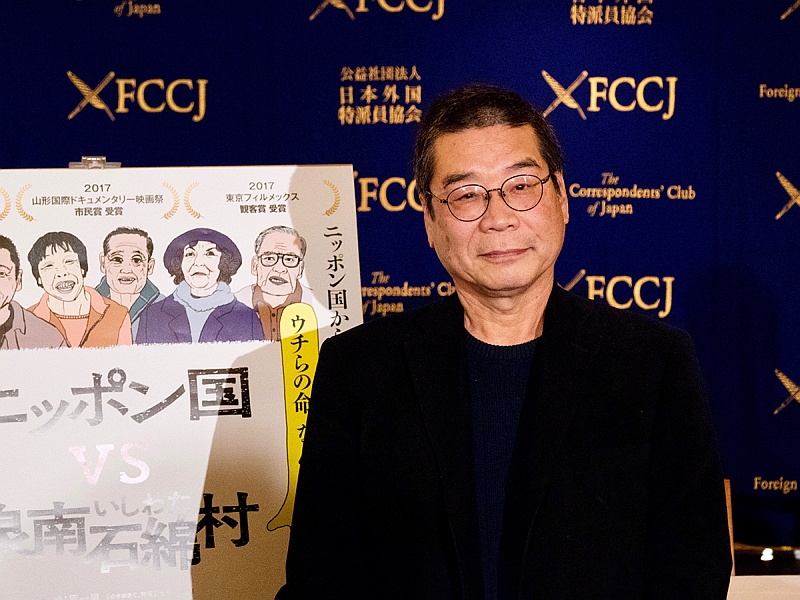
Hara said he chose to include illustrations in the poster because it would feel more "familiar" to Japanese. ©Koichi Mori
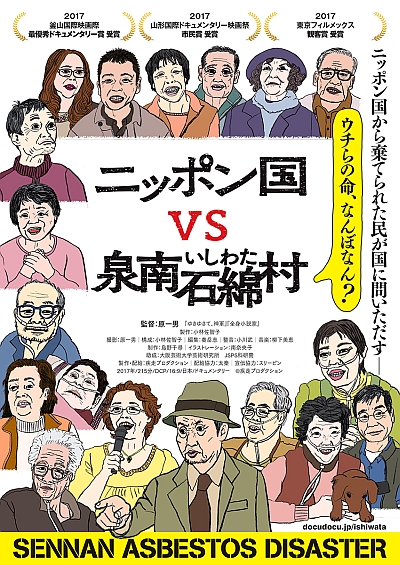
© Shissoh Production
Posted Friday, February 16, 2018
Read more
Published in: February
Tag: Kazuo Hara, documentary, awardwinning, asbestos
Comments

